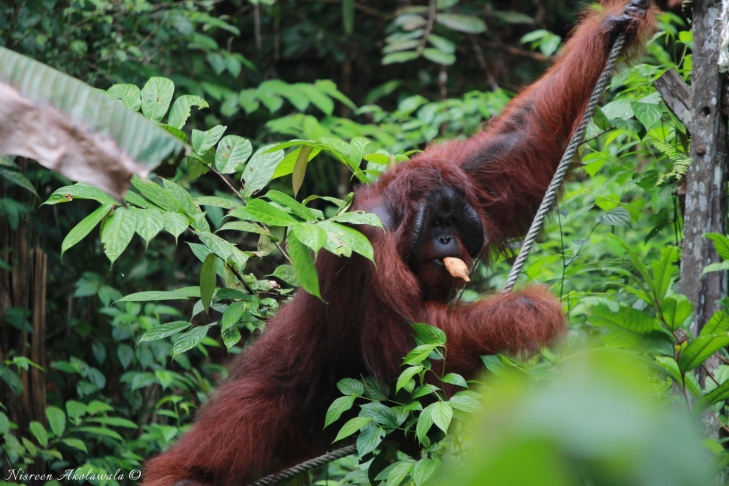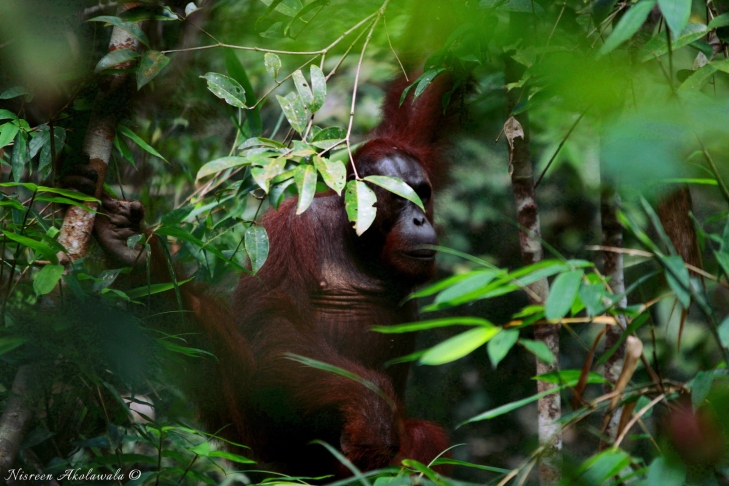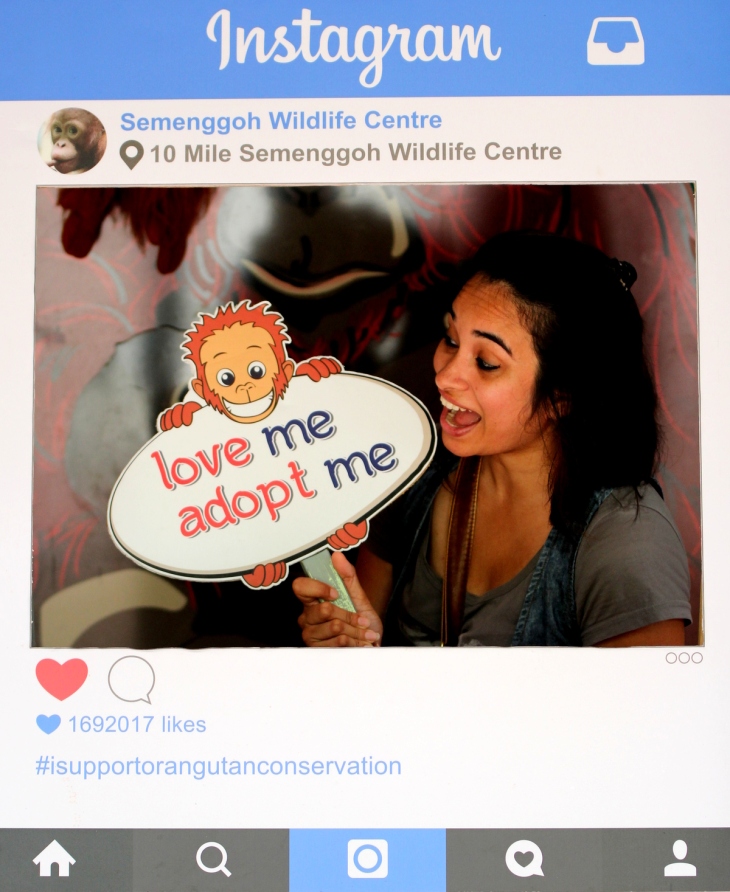Did you know the world has just two species of Orangutans, found only in Borneo and Sumatra? I had dreamt of seeing these exotic animals since forever and the moment we decided to travel to Malaysia for the second time around, I made sure to book a ticket to Kuching!
Did you know Orangutans, considered Asia’s great apes will very soon be extinct, with only 1 Lakh remaining ?
The Orangutans habitat and the best way to see them:
Orangutans live in low-lying peat swamp forests but are difficult to spot in the wild. Staying in Kuching is probably the best and easiest way to come up close and personal with Orangutans in their natural habitat, whilst in Malaysia. If you have lots of time on hand though, you can take one of the tours offered by these people to visit the interiors of Borneo forests. The Borneo rainforest is home to many unique and endangered species including the Borneo pygmy elephant, Bornean rhinoceros, clouded leopard and Hose’s palm civet. For us, the biggest attraction was to see the critically endangered old man of the jungle, otherwise known as the Borneo orangutan.
Also read: Going offbeat in coastal Karnataka
We figured that best places to see them, closer to the city are at the Semonggoh Wildlife Centre outside Kuching, Sarawak and the Sepilok Orang-utan Rehabilitation Centre near Sandakan, Sabah. Both centres rehabilitate orphans to reintroduce them into the wild. I visited the former and loved every bit of it. Some experiences just stay with you for a lifetime, and this was surely one of those.
Semenggoh Wildlife Centre:
There are particular feeding times every day, and it is best to reach around that time for maximum chances to spot these beasts. Feeding times are between 9am to 10am and between 3pm to 3.30pm. We booked an Uber from our Hotel straight to the Semenggoh Wildlife Centre, located 24kms from the city centre to attend the morning feeding session. There is one advise I would like to give though is, make sure your Uber drops you all the way inside, not just at the gate like ours did. We had no clue that the feeding area was far inside and a long walk from the main gate. After a long walk, including a hitchhike we finally reached the feeding area, in time for the Orangutans. Phew! What a relief it was.

I was keen to understand how Orangutans interact with humans and how they looked in the wild. We were advised to be as quiet as we can, so as to not disturb these beautiful animals. As the guide took us, amidst thick forest trails, my eyes kept looking around for that one glimpse or that one sound! Look! There! The Orangutans are coming to the feeding area,” whispered John, our guide cum ranger. Suddenly all eyes looked up in that direction, and before we knew it we two Orangutans coming. What a beautiful sight it was! That rusty orange coat, those expressive eyes surely gave me a memory worth treasuring for life. How many times do we actually get to see a wild animal, in its natural surrounding? All of us city-siders are used to sporting animals on NatGeo Channel or the local zoo, but trust me seeing them, in reality, was a unique experience altogether.
Around 20 Orangutans live in the protected forest with the Semenggoh Nature Reserve
The orangutans, inspite of being mighty jumped gracefully from one branch to another. Some even had little ones. John called them out by their names, which was so cute to see. Each of the Orangutans had a personality and a story behind them. Using certain peculiar sounds, John called out to each of them, inviting them to eat Bananas.
Also read: Top 5 things to do in Jaisalmer
John pointed us towards a massive Orangutan, that had a different looking face than the others. We learnt that Adult male orangutans can weigh up to 200 pounds. Also, what we saw in that particular Orangutan was prominent cheek pads called flanges and a throat sac used to make loud verbalizations called long calls.



More about Semenggoh:
Semenggoh, a 740-hectare forest reserve is home to family groups of orangutans, many of them starting as orphans. Over the years a number of those orphans have grown up to have their own families. There are now second and third generation orangutans that have been born and grown up in the park. You can learn more about each of the Orangutans and their individual personalities by visiting the tourist centre at the Semeggoh where there are charts and pictures depicting the life of each of these animals.
The dedicated rangers and wardens spend their days training the orangutans to feed and fend for themselves.
Why Orangutans are Critically Endangered?
- Orangutans have an extremely low reproductive rate makes their populations highly vulnerable. Females give birth to one infant at a time, only every 3-5 years so these species can take a long time to recover from population declines. With human pressure only increasing and much of their habitat cut down, orangutans face an increased risk of extinction.
- As you explore Kuching you will learn that over the years, the rich rainforest has been decimated in the name of palm oil. What was once a rich landscape of dense forest, is now palm oil plantations as far as the eye can see. This is why these gorgeous animals are struggling to survive.
- Another reason for them being critically endangered is that they are an easy target for hunters because they’re large and slow targets. They are either killed for food or in retaliation when they move into agricultural areas and destroy crops. This usually occurs when orangutans can’t find the food they need in the forest. Unfortunately, the females species are hunted most commonly.
How you can help Orangutans survive?

Get in touch with organisations that are working on preserving and adopting Orangutans. Few such examples are WWF or Orangutan.
Avoid products made with unsustainable palm oil. Rainforests in Malaysia are often cleared to make room for palm oil plantations, causing orangutans to lose their homes. Palm oil is used in so many products now that it is here to stay, but your choices can make a difference. Choose products made from deforestation-free palm oil, and put pressure on companies that aren’t responsibly sourcing their materials. Make sure to read labels on the oil and products you buy.
Talk to others and share this information. Talk to your friends and family, share this information and let them know about how they can help Orangutans from getting extinct. The orangutans need you.
2 thoughts
Comments are closed.